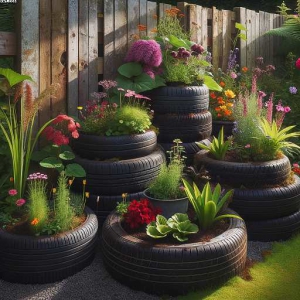Tap or Rain Water
Tap or Rain Water
Tap or Rain Water
So in my mind, this is a no-brainer. However, collecting rainwater can be difficult for many people. The internet is awash with companies selling water collection tanks. Coincidentally, I’m looking at a good product from a Lincolnshire company, “Enduramaxx” for yet another storage tank. This will be my third plastic tank!
There are also various connectors for connecting your guttering downpipe to a water tank. However, I do understand the ease of being able to just turn on your tap and water the plants. Importantly, rain water and tap water are very different in content. So, in most places, tap water will not harm your precious plants. However, rainwater is good for your plants and better than tap water.
Of course, one of the major components of chlorophyll is nitrogen. This is the green colour in plants that soak up the sunlight and use its energy to produce sugars from carbon dioxide and water. So, most gardeners and growers know this as “photosynthesis.” This is the basis for sustaining most plants’ life processes. Plants’ leaves will turn yellow if they lack nitrogen, as I mentioned in my previous post. So, eventually, wither up and die!
6 good reasons to use rainwater in your garden
There are several good reasons to use rainwater in your garden:
- Rainwater is free and readily available, especially in areas with high rainfall.
- Rainwater is naturally soft, which means it is less likely to leave behind mineral deposits that can build up over time in soil, pots, and containers.
- Rainwater is generally high in oxygen, which can help plants grow healthier and more vigorously.
- Using rainwater helps to conserve drinking water, which is especially important in areas with drought conditions or water shortages.
- Rainwater is more environmentally friendly than using tap water, as it does not require energy to be pumped and treated.
- Using rainwater can save you money on your water bill, as you will be using a free, naturally occurring resource instead of relying on your municipal water supply.
Unfortunately, our water treatment plants take out as much nitrate as possible.
Because high levels of nitrate can be dangerous to young children. Plants cannot access nitrogen directly, relying on “nitrogen fixation.” where nitrogen in the air is converted to “ammonia” and related compounds found in the soil.
Importantly, nitrogen fixation is carried out by microorganisms found in the soil. Accordingly, the root hairs of a plant is invaded by nitrogen fixing bacteria’s. So, stimulating the formation of root nodules. Inside the nodules then bacteria converts free nitrogen into ammonia aiding the host plant for its development.
Astonishingly, the lightning that we see in a regular thunderstorm can generate nitrogen compounds. These mix with the water and oxygen in our atmosphere. The relating rain that falls contains high levels of ammonium and nitrates. So, thunderstorms are of great benefit for outdoor plants or for collecting the water for watering at another time. Of course, not only watering but also topping up the plant with nitrogen are important.
Rain water the best long time option
Rainwater is different depending on where we live. When I’m travelling, I can tell the difference between different bodies of water. In fact, locally, I can tell the difference between my local tap water and the water at my Halifax business. The latter is the most delicious! This will also apply to plants. Tap water differs in acidity, and once again, a ph. test is well worth carrying out on your relative soil. Generally, though, tap water will be on the alkaline side. Of course, this is on the high side for many plant species.
In recent years, we have had TV ads advising us to save our dirty water for the garden! Thus saving our clean tap water. This is known as grey water! So, usually containing detergents and soap. This mix has an even higher ph, elevating it up to a 9 or 10 score on the ph. scale.
On the other hand, as the rainwater falls to earth, the water droplets absorb carbon dioxide. Rain also collects certain minerals on its way down to earth. As a result, the water has a slightly acidic ph. The acid rain finally reaches our gardens’ soil and aids in the release of micronutrients. including zinc, iron, and copper. important for the plant’s development and, therefore, good growth.
In my research and opinion, it is the collected rainfall that comes first. benefitting the plants with absorbed nitrogen and minerals. However, there are times when I have to use tap water, but in general, I save rainwater in water butts.
- Phoenix Cactus Haven Visit
- Cacti From Seeds
- Rediscovering My Passion for Cacti Growing
- Cacti My New Interest
- Decking Renewal Wedding Gift
Please check us out we are now in the top 20 Hydroponics blogs.

